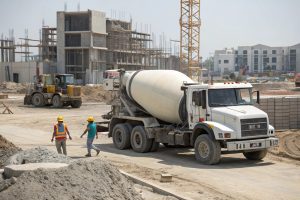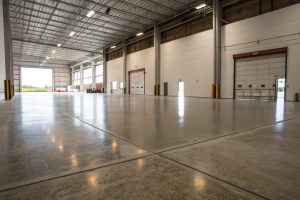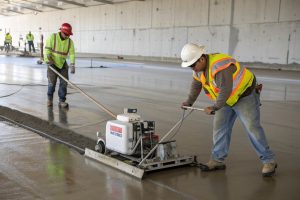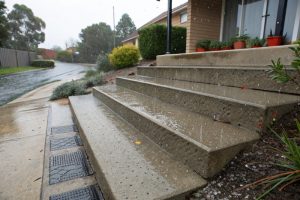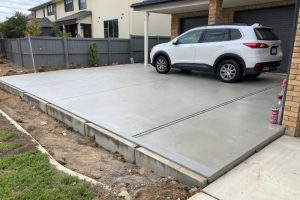Professional Concrete Demolition Services in Canberra
Why Canberra’s Climate Makes Demolition Different
Our extreme temperature swings—those brutal -10°C winter mornings followed by 40°C summer scorchers—create concrete stress patterns you won’t find in Sydney or Melbourne. Add in the ACT’s specific permit requirements, heritage considerations in established suburbs like Forrest, and the reality that many Canberra properties sit on compact blocks where a single misjudged swing of an excavator could damage a neighbor’s fence, and you’ve got a job that requires genuine local expertise.
At Ace Concreting, we’ve been handling concrete demolition across Canberra for years, and we’ve learned that successful projects come down to three things: knowing exactly what we’re dealing with before we start, having the right equipment for the specific job (not just the biggest hammer), and leaving your property cleaner than we found it. We’ve removed everything from small residential pathways in Ainslie to 2,000-square-meter commercial slabs in Mitchell, and the approach that works for a delicate hand-demolition job around existing landscaping is completely different from what’s needed when we’re clearing an entire loading dock for a warehouse renovation.
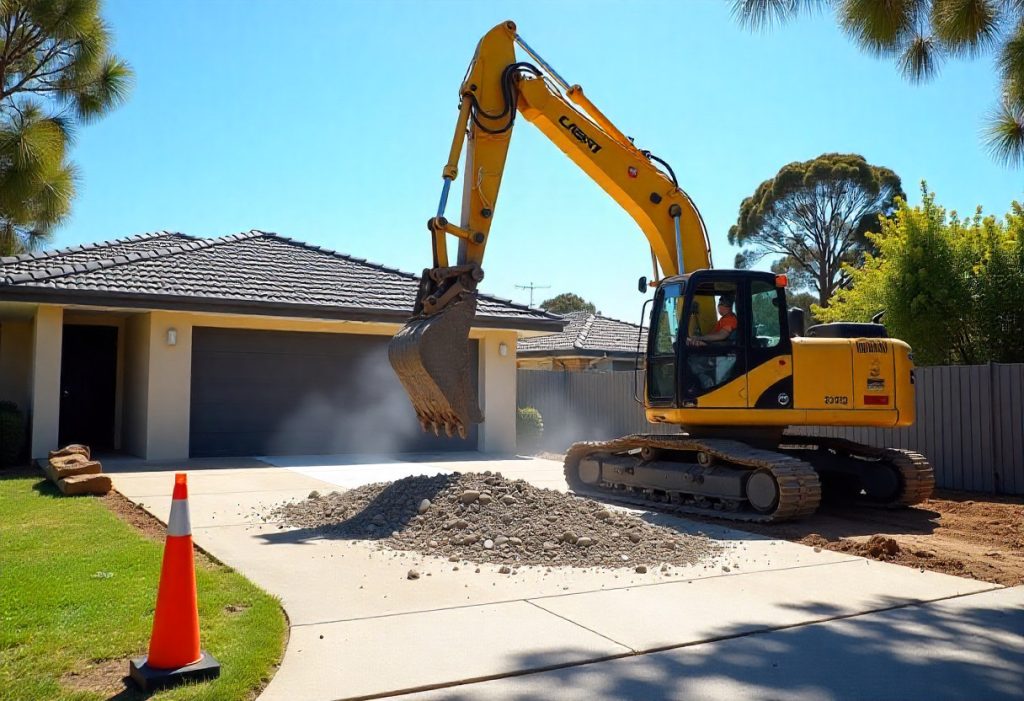
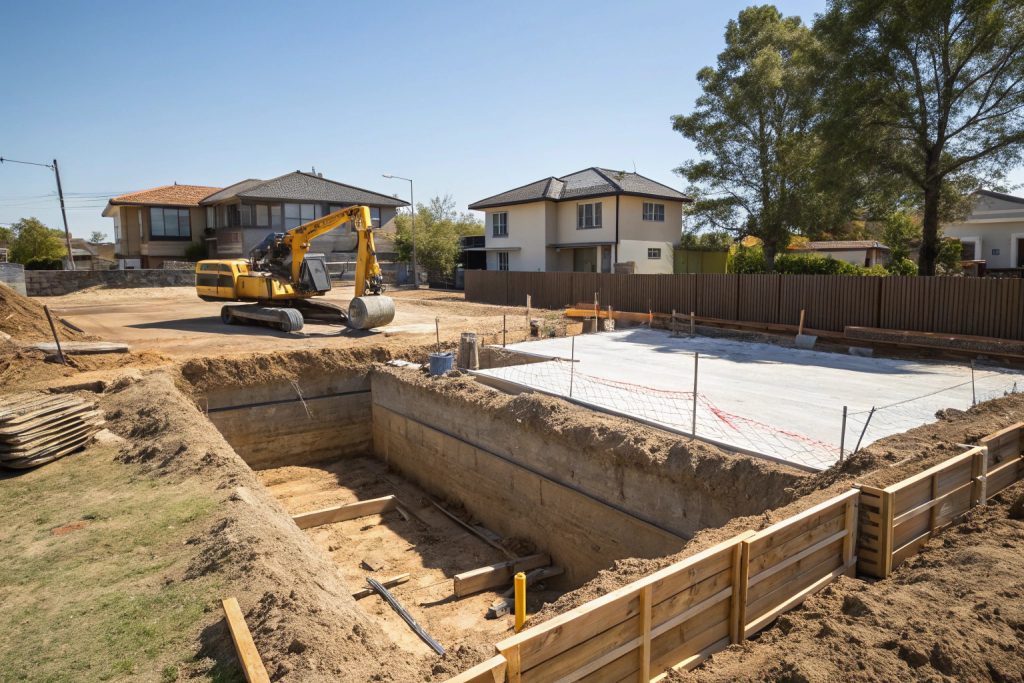
What Happens During a Proper Demolition Project
The demolition process itself involves more than just destruction. We’re locating and protecting underground utilities, managing asbestos risks in older structures (and yes, concrete from certain eras in Canberra can contain asbestos bonding), controlling noise to keep your neighbors from filing complaints with the council, and handling waste disposal according to ACT regulations. That last part matters more than most people realize—proper concrete recycling not only keeps material out of landfills but often reduces your project costs compared to standard waste disposal fees.
What really keeps property owners up at night isn’t the demolition itself—it’s the uncertainty around permits, timing, costs, and disruption. Will the council approve this? How long will the property be unusable? What if we discover unexpected problems once we start? These are legitimate concerns, and they deserve straight answers based on actual Canberra experience, not generic demolition advice that might work in another city but falls apart when faced with ACT building codes and our specific climate challenges.
Types of Concrete Demolition Services We Provide in Canberra
Residential Concrete Removal
We handle residential concrete demolition for driveways, walkways, patios, pool surrounds, old shed slabs, and those random concrete pads previous owners installed for purposes nobody can quite remember. The residential jobs require a different touch than commercial work. Your garden beds matter. Your neighbor’s newly painted fence matters. That prized Japanese maple your wife spent three years nurturing matters. We bring in equipment sized for suburban access, not industrial demolition, and we plan the work around your schedule because we understand that having contractors tearing up your driveway during your daughter’s birthday party isn’t acceptable.
Commercial and Industrial Concrete Demolition
We’re talking warehouse floors that have carried decades of forklift traffic, loading docks that no longer meet current safety codes, parking lots with drainage failures, and retail space renovations where the existing slab needs removing before the new design can happen. For commercial demolition, we coordinate with your operations team to minimize downtime. Weekend work, staged demolition that keeps portions of your facility operational, dust containment that prevents product contamination—these aren’t extras, they’re standard procedure for commercial clients who can’t afford to shut down completely while we work.
Selective Demolition vs Complete Removal
We’ve cut out damaged driveway sections and left the good portions for cost savings, removed problem areas of commercial floors while keeping the main slab, and taken out old patio extensions while preserving the original structure.
Selective work requires different equipment and more careful planning. You can’t just bring in the biggest excavator and start swinging. Hand tools, concrete saws for precision cuts, and experienced operators who understand where to stop—that’s what makes selective demolition work without creating more problems than you started with.
Foundation and Structural Demolition
Removing an old shed foundation is straightforward. Removing a failed house foundation for replacement while the structure is temporarily supported? That requires engineering consultation, proper shoring, and contractors who’ve done it before without catastrophic results.
We handle foundation demolition for everything from small garden structures to full house renovations where the existing foundation no longer meets code or has deteriorated beyond repair. These jobs always start with structural assessment because guessing about what’s holding up your building is how people end up with insurance claims and council investigations.
Concrete Breaking and Sawing Services
Not every demolition job needs complete removal. Sometimes you need access through a concrete floor for new plumbing, or a doorway cut through a concrete wall, or a section of slab removed for underground utility work. That’s where concrete sawing and controlled breaking come in—precision work that creates the opening you need without damaging surrounding areas.
We use diamond blade saws for clean cuts through reinforced concrete, core drilling for pipe penetrations, and controlled breaking techniques for removal once the cuts are made. This work happens inside occupied buildings, around active utilities, and in situations where collateral damage isn’t an option.
Asbestos-Containing Concrete Removal
Here’s something that surprises property owners: concrete installed during certain decades in Canberra’s development can contain asbestos fibers. Not every old concrete has it, but enough does that testing before demolition isn’t paranoia—it’s legal requirement for structures over a certain age. We coordinate asbestos testing through licensed assessors, and when it’s present, we bring in certified asbestos removal contractors before we touch the material.
Asbestos-containing concrete can’t be demolished like standard material. Different equipment, breathing protection, waste disposal procedures—the whole job changes.
Our Concrete Demolition Process in Canberra
• Site Assessment & Planning – Onsite inspection to check slab thickness, reinforcement, access, and potential issues before quoting.
• Permits & Approvals – Handle ACT council permits, documentation, and compliance to avoid delays.
• Utility Location & Protection – Identify and protect underground utilities using detection tools and safe methods.
• Dust & Noise Control – Use water suppression, barriers, and proper scheduling to minimize impact on neighbors.
• Demolition & Safety Protocols – Apply the right equipment and strict safety measures to ensure controlled, hazard-free demolition.
• Waste Removal & Recycling – Dispose of debris per ACT regulations, recycle concrete, and provide waste documentation.
• Site Cleanup & Preparation – Grade and prepare the site for the next stage, leaving it clean and construction-ready.
Concrete Demolition Methods and Equipment We Use
Mechanical Demolition with Heavy Equipment
The advantage of mechanical demolition is speed and efficiency on open sites with good access. A driveway that might take a crew with handheld breakers two full days can be demolished and removed in half a day with proper equipment. The limitation comes when access is tight, when you’re working close to structures that can’t handle vibration, or when the concrete contains heavy reinforcement that requires cutting before breaking.
Handheld Breakers and Jackhammers
We’ve used handheld breakers to remove concrete paths running between established garden beds, to demolish interior floor sections without damaging surrounding areas, and to break up patio sections tucked under roof lines where excavator access was impossible. The operator can feel the concrete breaking, adjust force and angle in real-time, and stop immediately if they hit something unexpected. That responsiveness matters when you’re working around utilities or close to structures.
Concrete Sawing and Cutting Techniques
Sawing is the method for creating expansion joints before breaking, for removing sections while preserving adjacent concrete, and for creating openings through walls and floors. The cuts are clean, the edges are straight, and you’re left with defined sections that can be removed without affecting surrounding material. Water cooling during cutting controls dust and extends blade life, though it does create slurry that needs containing and cleanup.
Robotic and Remote Demolition Equipment
For specialized situations—indoor demolition with limited ventilation, working in contaminated environments, or demolition near sensitive equipment—we sometimes bring in remote-controlled demolition robots. These machines operate via remote control, keeping the operator at a safe distance while the equipment does the breaking.
They’re smaller than excavators but pack serious breaking force, and they fit through doorways and into spaces where traditional equipment won’t go.
Controlled Demolition for Sensitive Sites
We use smaller equipment, work in stages that limit debris and noise at any given time, and employ techniques like pre-cutting and sectional removal that reduce vibration and keep dust contained.
Controlled methods take longer and require more labor, but they’re how you demolish a concrete patio without damaging the 80-year-old brick wall behind it, or remove a driveway section without disturbing the established rose garden along its edge. Property owners who value what’s staying more than they worry about demolition speed appreciate the extra care, even if it adds a day or two to the project timeline.
Hydraulic Splitters and Non-Explosive Breaking
We’ve used splitters for demolition work near server rooms that couldn’t tolerate vibration, for removing concrete close to pool walls where breaking could have caused damage, and in residential situations where standard breaking methods risked cracking adjoining structures. The method works well for thick concrete and heavily reinforced sections where breaking would be difficult, though it’s slower than conventional demolition and requires more skilled operation.
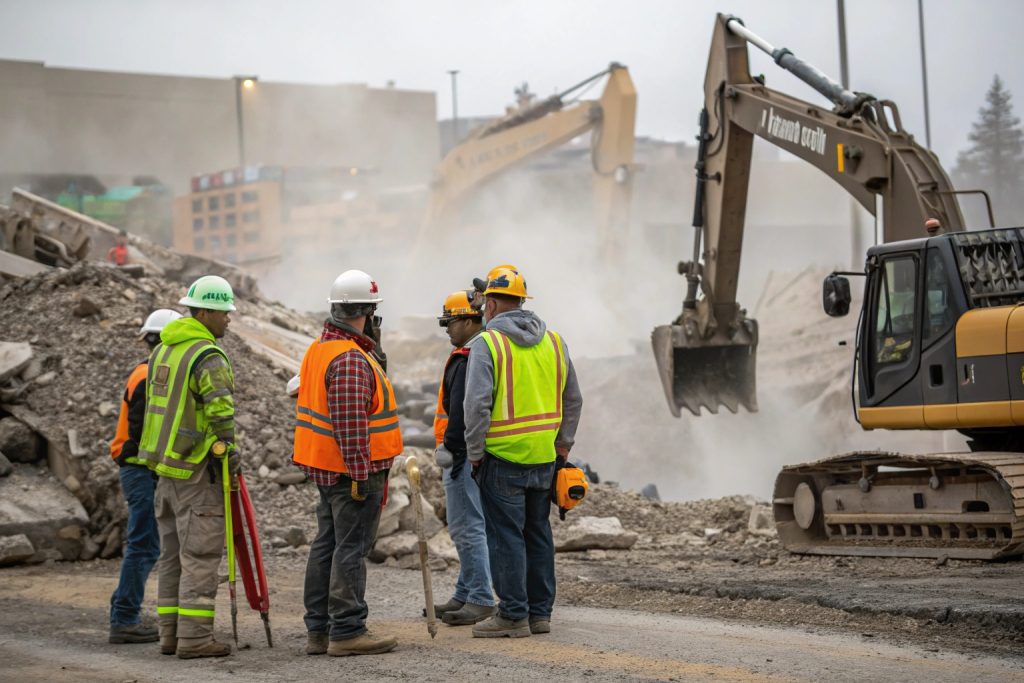
What to Expect: Timeline and Process for Your Demolition Project
- Duration: A standard residential driveway usually takes 1–2 days from demolition to cleanup. Larger, reinforced, or restricted-access projects can take several days to weeks. Contractors build in buffer time for unexpected issues (e.g., hidden rebar, utilities, old foundations).
- Weather Impacts: Canberra’s climate can delay work—rain, extreme heat, or winter conditions affect progress. Contractors monitor forecasts and adjust schedules to minimize delays.
- Day One Setup: Includes safety fencing, dust barriers, equipment positioning, and a final walkthrough with the property owner before demolition starts. Most noise and dust occur early in the process.
- Managing Disruption: Steps are taken to protect landscaping, structures, and family/business routines. For commercial sites, work may be phased or scheduled to reduce business impact.
- Unexpected Discoveries: Hidden reinforcement, utilities, or hazardous materials may extend timelines. Contractors stop, reassess, and communicate before proceeding.
- Completion & Handover: Final walkthrough, cleanup, grading for drainage, and handover of documentation (waste disposal receipts, compliance certifications). Site is left prepared for the next construction phase.
Concrete Demolition Cost Factors in Canberra
- Size & Thickness: Bigger and thicker slabs cost more due to extra labor, time, and disposal weight.
- Reinforcement: Wire mesh, rebar, or post-tension cables add complexity and raise costs.
- Access: Easy street access is cheaper; tight gates, steep blocks, or tricky sites increase costs.
- Disposal: Clean concrete is cheaper to recycle; contaminated or mixed waste is more expensive.
- Permits & Extras: Council fees, asbestos testing, and advanced dust/noise control may add costs.
- Quotes: Onsite inspections give accurate pricing—beware of lowball phone estimates with hidden charges.
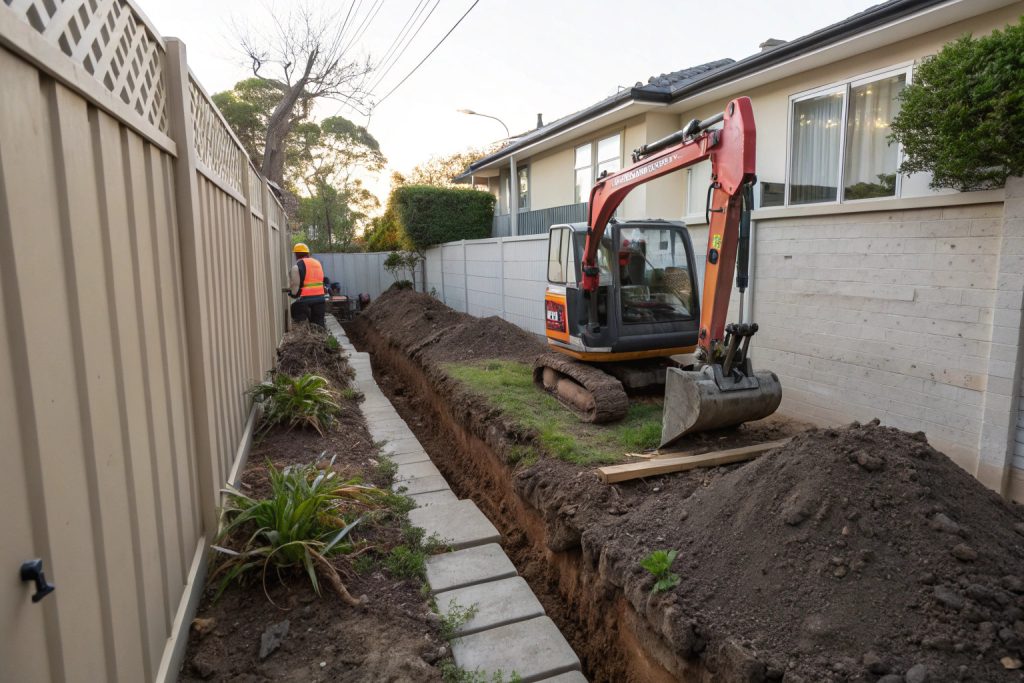
If you’re ready to take the next step and get started on your concrete job with Canberra’s best concreter, contact us now for a no obligation quote.
Why Choose Ace Concreting for Your Demolition Project
• Local Expertise: Years of experience across Canberra suburbs, including heritage areas, steep sites, industrial slabs, and residential properties.
• Right Equipment & Skilled Operators: From handheld breakers to heavy machinery, with certified operators who know how to demolish safely and efficiently.
• Licensed & Insured: Full ACT builder’s license, liability insurance, workers’ comp, and strict compliance with WorkSafe ACT, council, and environmental standards.
• Clear Communication: Transparent updates, plain-language explanations, and real-time discussions when unexpected issues arise.
• Complete Service: One team handles assessment, permits, demolition, waste disposal, and site cleanup—ready for new construction without delays.
Frequently Asked Questions About Concrete Demolition in Canberra
Most residential concrete demolition doesn’t require permits, but there are exceptions. Demolition near heritage areas, work involving structural elements, or commercial projects often trigger permit requirements. We assess your specific situation during the initial consultation and handle permit applications when needed. The ACT’s Access Canberra website provides general guidelines, but individual properties can have specific restrictions based on location, age, or previous modifications that aren’t obvious from general regulations.
Residential driveway demolition typically ranges from $50 to $150 per square meter depending on thickness, reinforcement, access conditions, and disposal requirements. A standard 50-square-meter driveway might cost $3,000 to $5,000 for complete removal and disposal. Thicker commercial slabs, heavily reinforced structures, or projects with difficult access cost more because they require additional equipment, labor, and time.
Protecting surrounding areas is part of professional demolition work. We use appropriately sized equipment for available space, establish protective barriers around adjacent structures and landscaping, and employ precision techniques when working near elements that need preserving. Concrete saws create clean separation lines, hand tools provide control in tight spaces, and experienced operators know how to break concrete without creating excessive vibration or flying debris.
Complete damage prevention isn’t always possible—demolition inherently involves breaking things—but careful contractors minimize impact and repair any minor damage that occurs. We discuss protection priorities during initial assessment so everyone understands what’s realistic for your specific site conditions.
Winter demolition is possible but comes with challenges. Frozen ground makes excavation harder, short daylight limits working hours, and cold affects some equipment operation. We monitor weather forecasts and communicate about conditions that might delay work. Rain and extreme cold sometimes force postponement, but most winter days in Canberra allow demolition work with appropriate planning.
Summer presents its own challenges with extreme heat affecting workers and equipment. Spring and autumn generally provide better working conditions, but we handle demolition year-round when clients need work completed regardless of season.
If we encounter suspected asbestos during demolition, work stops immediately. We secure the area, arrange testing through licensed assessors, and await results before proceeding. This protects everyone on site and prevents illegal asbestos disturbance. If testing confirms asbestos presence, licensed removal contractors handle the material under controlled conditions before we resume demolition.
Property owners sometimes resist asbestos testing due to cost concerns, but discovering asbestos mid-demolition creates far larger expenses than testing before work starts. The legal and health implications of improper asbestos handling aren’t worth the risk of skipping proper procedures.
